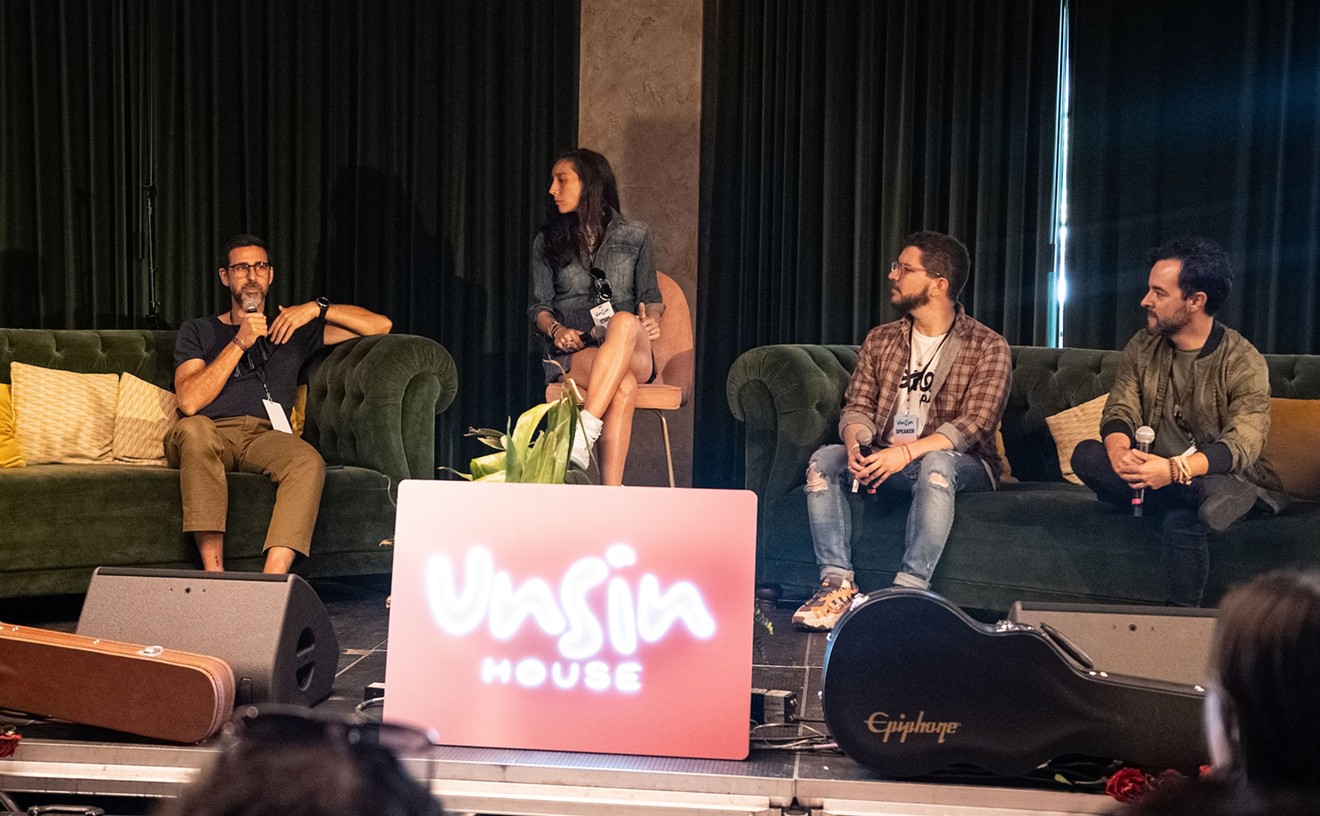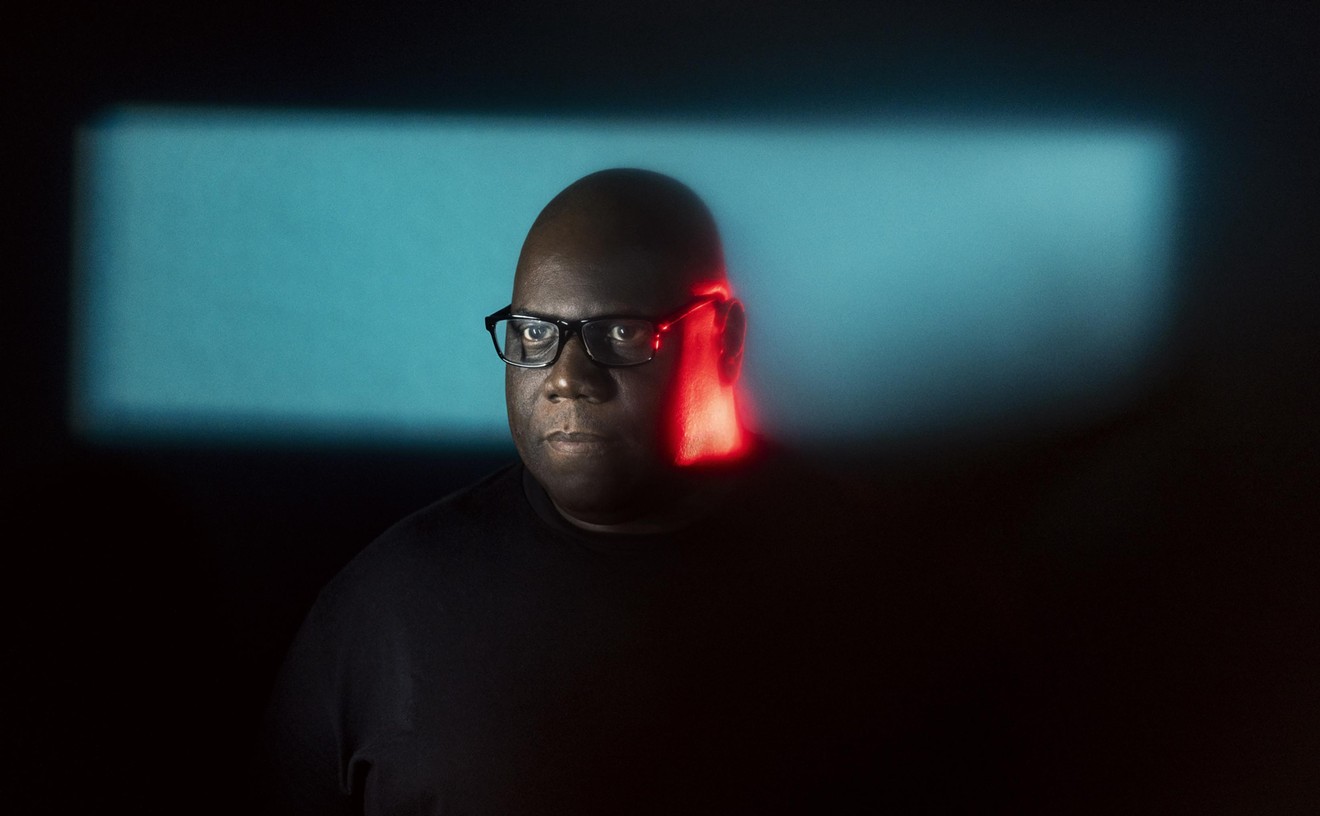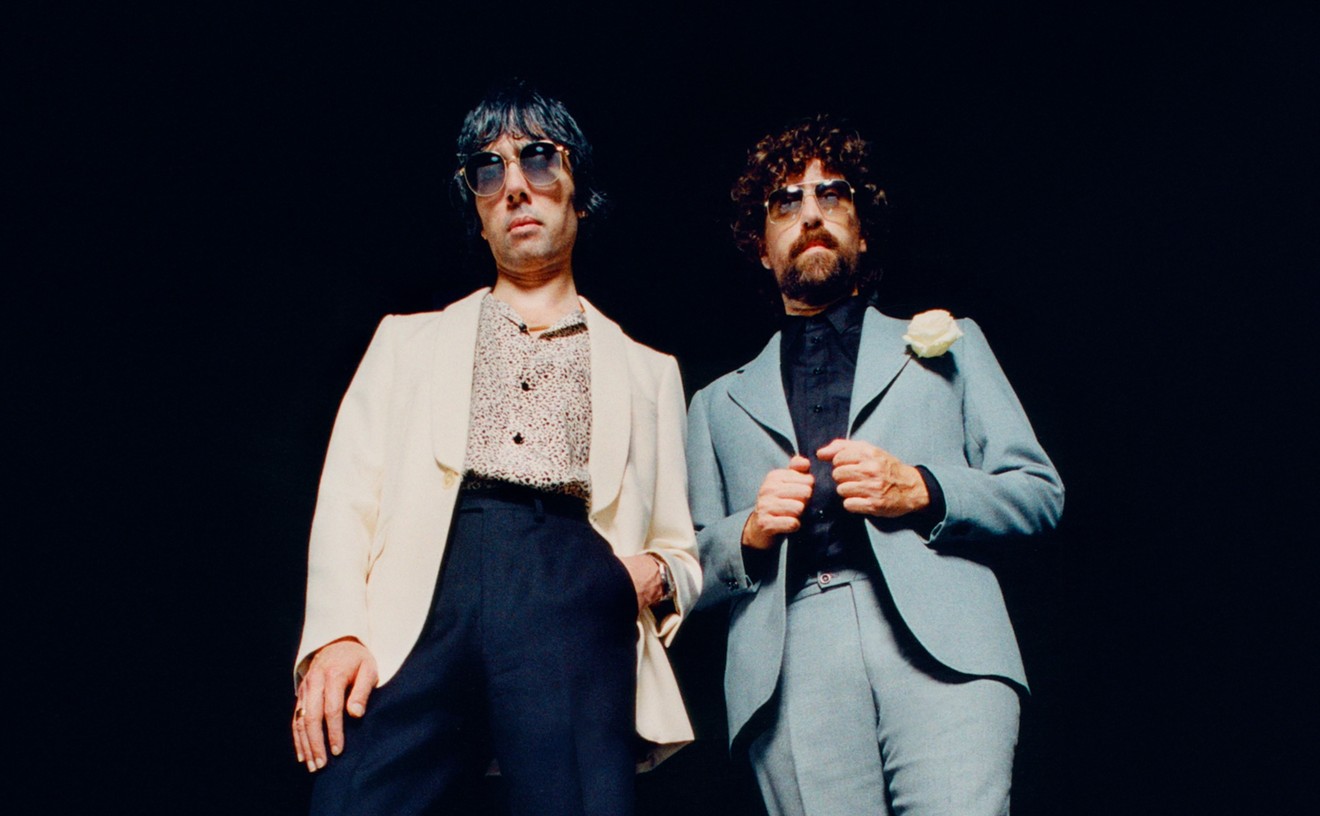If the Nineties promised a fecund formal free-for-all, so far the Two-Zeros have made good, if only inadvertently: The radio's dominated by made-to-(somebody's)-order celebrities who can't decide if they're dating or not and the young men and women who were supposed to inherit Kurt Cobain's legacy have opted instead to pledge loyalty to Gene Simmons. And still the bizarre lurks among us, in the alien-funk tracks Britney Spears hires the Neptunes to provide her, or the stoopid prog changes System of a Down throws into its labored nü-metal, or even the awful goatee that guy from Nickelback wears on MTV. Beneath the radar's reach, even stranger things are afoot: Cold House, a fascinating record released late last year by a mopey English band called Hood, matched fussy glitch techno to pasty space rock to undie hip-hop and made it hum even more convincingly than Radiohead; the Washington, D.C., band the Dismemberment Plan plays songs that sound like Fugazi but glide like Steely Dan; in the U.K. at-home aesthetes cook up unauthorized mixes of popular radio hits by splicing the well-known vocal track to an entirely different song's music and watching the cross-cultural sparks fly. (Imagine Destiny's Child's "Bootylicious" atop Cobain's "Smells Like Teen Spirit" -- then download it -- and you're halfway there.)
It's in this atmosphere that Nobukazu Takemura's music makes the most sense. A Japanese musician who's been working for over fifteen years, Takemura has amassed a number of personalities: eager hip-hop DJ, brainy serious-music composer, quaint electronica producer, nerdy post-rocker, nerdier glitch maestro. Sometimes it all goes into a project; sometimes he works exclusively in one or two forms. Yet whichever elements Takemura chooses to join, they nearly always cohere under his steady hand, less like a conscious fusion of disparate styles and more like the natural sound of music in our age, when the possibilities buried in raw materials are as open to exploration as we want them to be.
Takemura does a lot of exploring on his new Sign EP, which has just been released in the United States by the Chicago-based Thrill Jockey (a label that's done a good deal to outline what should happen creatively when the future is now). The disc contains two "sides," one consisting of solo Takemura material and the other the result of a collaboration with three members of flagship Thrill Jockey outfit (and frequent Takemura tourmates) Tortoise. On his side Takemura folds the abstract sound sculpture of his 1999 album Scope, on which he manipulated the sound of skipping CDs into dizzying prisms of interlocking semi-rhythms, into what is basically a mechanized pop song: "Sign" is sung by a vocodered robot voice, and it's got a chorus that's at least as catchy as anything on the last J. Lo record. It's dazzling in the same way Daft Punk's Discovery or Missy Elliott and Timbaland's stuff is, because it invests a simple form with complicated textural detailing; if you've heard "Sign" only once you haven't really heard it. The same goes for "Souvenir in Chicago," the 35-minute piece that dominates the EP's second side. The music here starts out as a typically liquid post-rock groove, guitarist Bundy K. Brown setting a pulse with a pattern of delicate arpeggios before bassist Douglas McCombs and drummer John McEntire pin it down five minutes in. Takemura contributes gauzy organ throughout, then takes the song into his own hands halfway through, when he splinters the groove into tiny shards of sonic debris and reconstructs the melody out of the fragments, making it sound like Chinese wind chimes blowing in the post-apocalyptic breeze (should there be breezes following the apocalypse, of course). It feels just as contemporary -- and just as free of predetermined genre -- as we could hope, pretty close to what we thought we'd be listening to today all those years ago. Takemura hopes so.
"When I am making records, I begin very open-minded. It is not until I am choosing what goes on a record that I make a conscious effort to decide what the record is going to sound or feel like," he says shortly before leaving on a tour that will bring him to Miami with the like-minded English duo Plaid. "I prefer to think I am making popular music. Not necessarily pop music in a traditional way, but music that is popular. I am not intentionally making a more difficult record at one time and a less difficult one the next. I am constantly making music, and it is not until the final product that I really decide what a record will be."
If he decides then, that is. Hoshi No Koe, Takemura's Thrill Jockey album from last year, is even more bewitching than Sign, less concrete than that disc's most extroverted moments but more varied, too, as it drops hip-hop loops, new-age keyboard tones and skipping CDs into a set of whimsical mood pieces redolent of a curious (and curiously talented) child tottering around a well-appointed recording studio, picking up instruments and wondering how they work. "Elderly people or kids in kindergarten tend to like my music," Takemura told Wired magazine recently. Listening to it at a time like now -- listening to how deftly it resists categorization and yet how amply it consumes styles -- it's not hard to imagine that the very old and the very young are the only ones among us still able to accept Takemura's music simply as it is.










